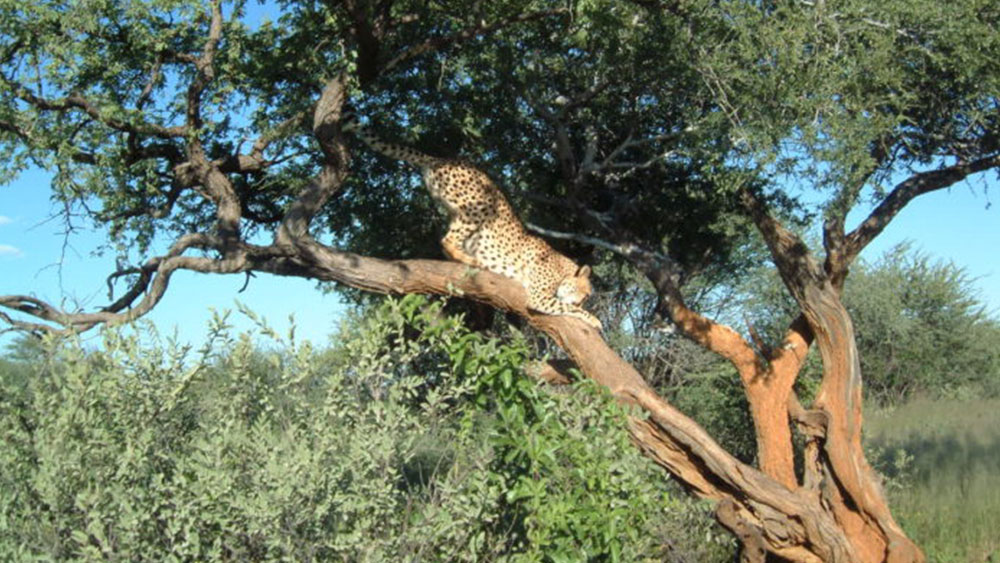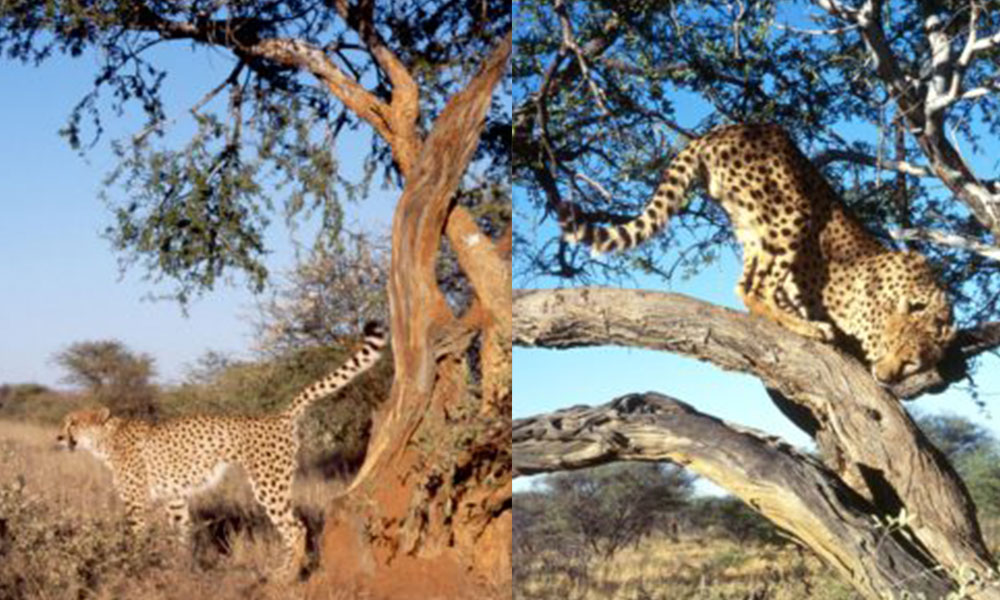A Cheetah’s Favorite Spot
-

- by Dr. Laurie Marker October 28, 2016

Cheetah Play Tree Update:
Large distinct trees in the Namibian landscape that are frequented and scent-marked by cheetahs are referred to by Namibian farmers as ‘playtrees’ or ‘newspaper’ trees. These trees are where historically farmers set cage traps and catch cheetahs – this is one of the important reasons to learn more about these certain trees.
These “newspaper” trees where cheetahs leave their markings in their large home ranges, helps individual cheetahs share their story to other cheetahs through the scents they leave behind. These marking trees have been used to study cheetahs and researchers knew that some trees were visited more frequently by cheetahs than others, but it was not fully understood what made a particular tree more favorable. So, CCF researchers set out to gather more information about these trees hoping to gain insight into this behavior and to better understand what makes the perfect ‘playtree’.

It turns out that the perfect cheetah ‘playtree’ is one that is visually obvious across the landscape. These preferred trees were the taller trees with large canopies and sturdy enough to climb. Since cheetahs are not good climbers like other cats (they look like a dog in a tree), the limbs need to be at an angle to hold their bodies. They use the trees to gain height to see the area around. As most of their habitat is very thick bush. So, the visibility appears to be an essential feature that cheetahs use to determine these scent posts therefore sharing with other cheetahs that this area is a part of their territory.

By studying these highly visible landscape features, we have gained a glimpse into what makes a particular ‘playtree’ a cheetah favorite. We believe that these new details can help us further our understanding of cheetah scent-marking behaviors and shed light on how scent-marking influences territorial positioning among individual cheetahs that have overlapping home-ranges. We continue to acquire additional knowledge about how free-ranging cheetahs utilize their huge home ranges, so that we can continue to improve our conservation approaches.
Fun Feline Fact – The smirking or grinning behavior observed when cats detect an odor is called the Flehmen response. The animal lifts its top lip and extends its neck to expose a small sensory organ housed above their nasal cavity to a variety of pheromones and other chemical cues often found in urine or feces.
From: Scent-post Preference of Free-ranging Namibian Cheetahs.
Walker, E.H., Nghikembua, M., Bibles, B., Marker, L. Global Ecology and Conservation. 2016. Vol. 8. P55-57
Related Reading
-
August 27, 2025
Sniffing Out Stories with the Scat Detection Dog Team




